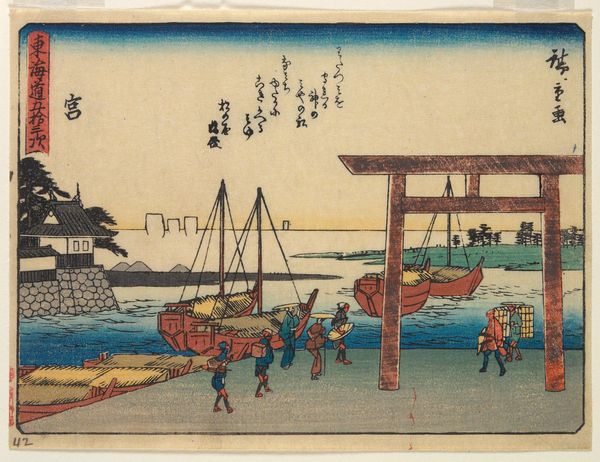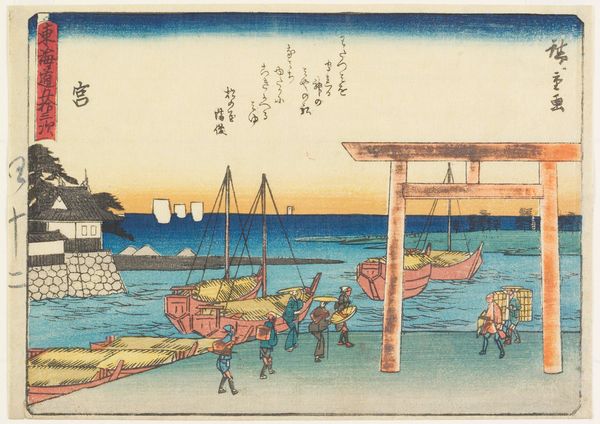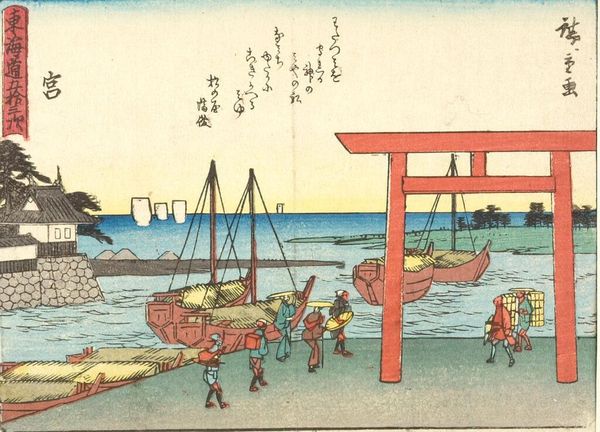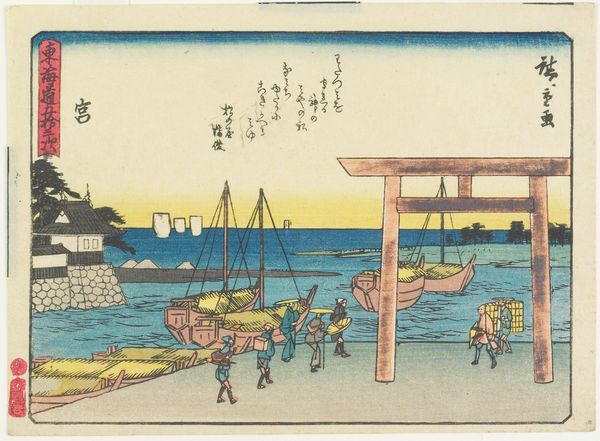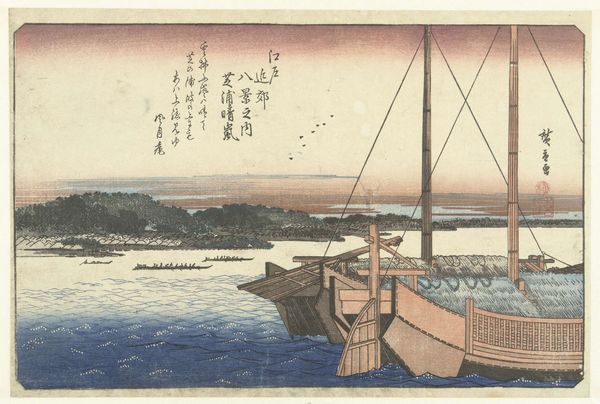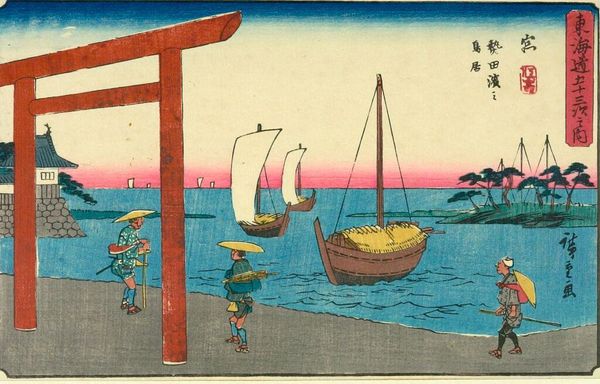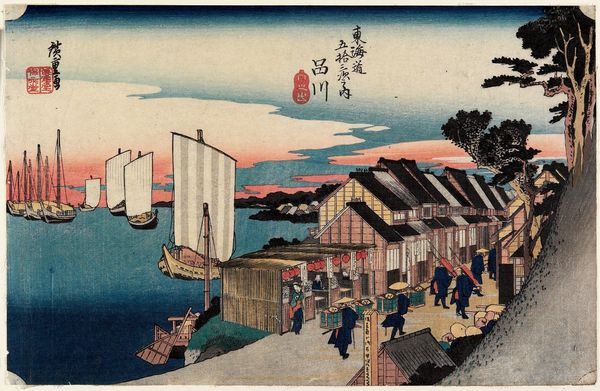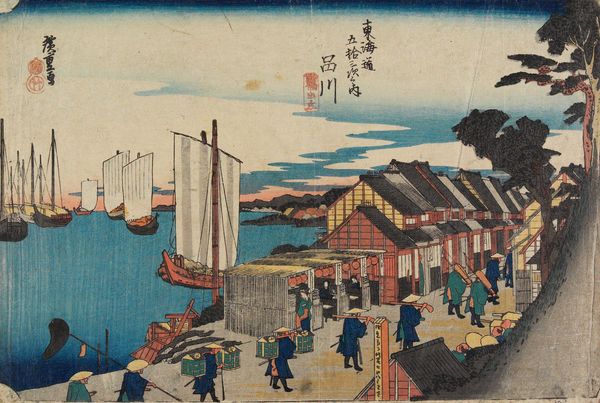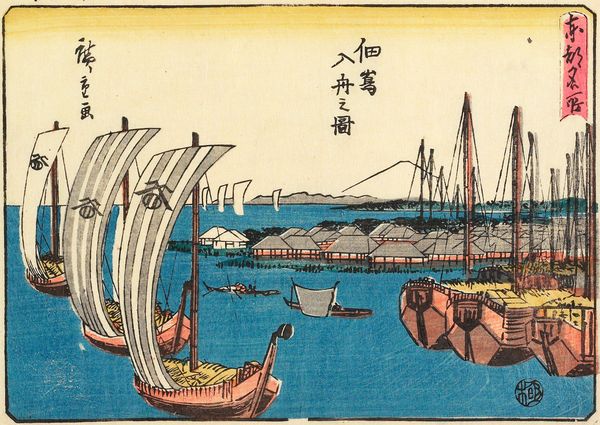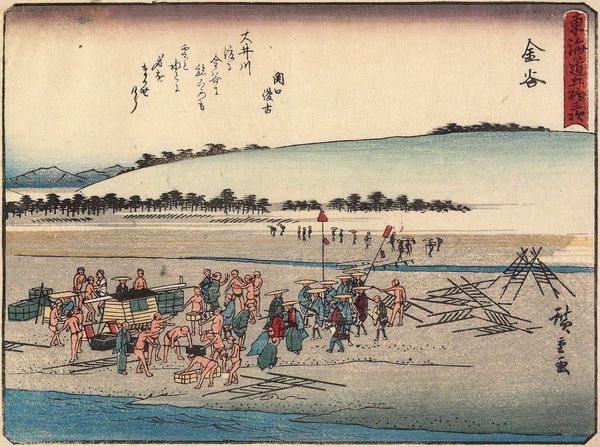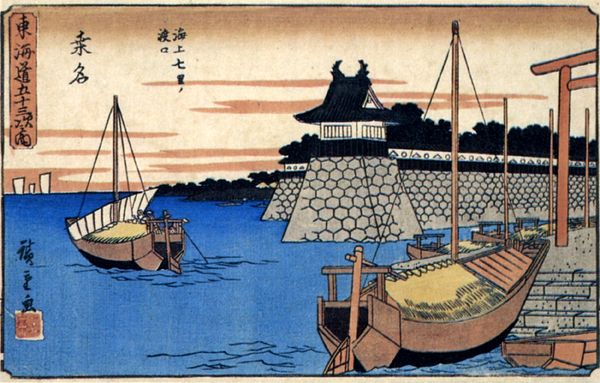
print, ink, woodblock-print
#
narrative-art
# print
#
asian-art
#
landscape
#
ukiyo-e
#
ink
#
woodblock-print
Dimensions: 6 x 8 1/4 in. (15.2 x 20.9 cm) (image)6 1/4 x 8 1/2 in. (15.9 x 21.6 cm) (sheet)
Copyright: Public Domain
Curator: I’m immediately struck by the liminal space created by the Torii gate—a border of sorts, neatly dividing the bustling foreground from the tranquil bay. It’s an interesting pictorial device. Editor: Yes, and those vibrant, primary hues seem at odds with the somber theme. Let me introduce our listeners to this intriguing work. It is a woodblock print titled "Miya," created by Utagawa Hiroshige around 1840-1842, part of his series "Fifty-three Stations of the Tōkaidō". It resides at the Minneapolis Institute of Art. Curator: The materiality of this piece speaks volumes. That wood grain, still evident beneath the ink, suggests a laborious, hand-crafted process. And observe how the line, particularly in the rendering of the figures, carries its own expressive weight! The labor implied in this image is more than the transport by those figures. It encompasses artistic craft as well. Editor: I agree. The labor in the production of the paper, pigments, cutting of the blocks, and printing are all there. These stations, each a stop along the great road, were built, rebuilt and supported with constant care, reflecting not just commerce, but how those commodities were obtained and sustained with local materials. And each little cut reflects a narrative from the life along that path. Look at how that small shrine's architectural features have been depicted. Curator: Precisely! Each architectural detail, a visual element contributing to the overall composition. Speaking of which, notice how the receding lines of the shore, anchored by the solid mass of the temple complex on the left, create a convincing illusion of depth. A kind of semiotic marker directing us toward symbolic pilgrimage. Editor: I see these materials as carrying symbolic weight themselves: the wooden boats suggesting a connection to trade routes. But for those to travel goods meant that people traveled as well and built settlements and markets using local materials for local needs. What is that wooden gate in the foreground actually framing in that view? It calls into question our definitions of place, time and art. Curator: Fascinating. "Miya" indeed offers a visual experience rich with thoughtful detail and structural nuance. Thank you. Editor: It leaves us thinking about materials and all that travel has brought with them. I agree, it’s rather fascinating.
Comments
No comments
Be the first to comment and join the conversation on the ultimate creative platform.
